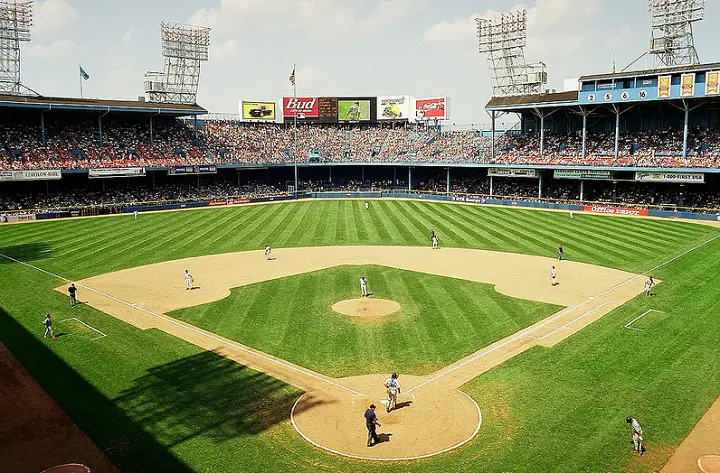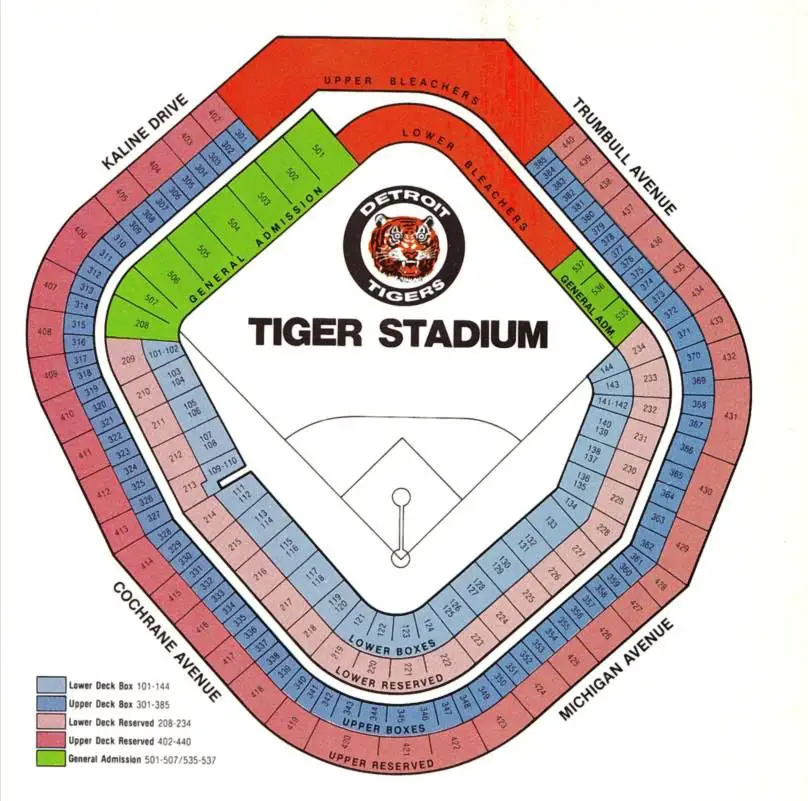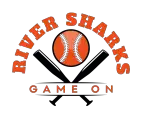Tenant: Detroit Tigers
Capacity: 23,000 originally, 52,400 final
Surface: Grass
Cost: $8 million including renovations
Opened: April 20, 1912
Closed: September 27, 1999
Demolished: Summer 2008/9
Dimensions: 345-L, 467-C, 370-R (original), 340-L, 440-C, 325-R (final)
Architect: Osborn Engineering
Location: Intersection of Michigan and Trumbull Avenue
History Of Tiger Stadium
The Tiger Stadium is considered one of the most popular stadiums in baseball history and was the home of the Detroit Tigers for just under a century. It was first created by Detroit owner Arthur Van Der Beck in 1896.
Over the next 100 years, it would see numerous renovations and improvements. However, by the 1930s these were completed and the stadium would keep the same iconic look for 70 years.
When the Tiger Stadium was closed in 1999, it then stood dormant for 10 years while several preservation groups attempted to save the stadium and renovate a portion of it. However, the City of Detroit wasn’t interested and finally started demolishing the Tiger Stadium in 2008.

Who / What Is It Named After
Tiger Stadium was originally named Navin Field in 1912, after the Detroit Tiger’s club owner Frank Navin.
In 1930, Navin Field was renamed Briggs Stadium after the owner, Walter O. Briggs. This was after the first renovations.
Tiger Stadium was renamed for the final time in 1961 when the Detroit Tigers were purchased by John Fetzer. This was renamed after the team and made it synonymous with their games played at home.
When Did It Open
Tiger Stadium was first technically opened in 1896 when Arthur Van Der Beck purchased the Detroit Tigers and created a 5,000 ballpark called Bennett Park, originally made of wood. Over the next 15 years, this stadium was expanded multiple times.
However, each renovation was made of wood allowing it to deteriorate during this time. It would have cost more to fix than building a new stadium, so the owner decided to create a new stadium made from steel and concrete on the same ground.
The new and improved stadium was officially opened on April 20, 1912.
What Team Plays There
The Detroit Tigers played at the Tiger Stadium for almost a century. This stadium was never used by any other teams, even when it wasn’t named after the Detroit Tigers team.
Location
The Tiger Stadium could have been found at the intersection of Michigan and Trumbull Avenues. After the stadium was demolished, the site lay dormant for a long 7 or 8 years. In 2016, the Detroit Police Athletic League purchased the property and built the Corner Ballpark on the old Tiger Stadium site. This is a youth sports complex.
Capacity (Seated & Standing)
When the ballpark was first opened in 1912, the capacity was 23,000 seats. During the initial renovation in 1923, the second deck was added between the first and third base. This brought the capacity up to 30,000.
After another owner change, the now Briggs Stadium went under another renovation in 1936 adding another deck to the previous single deck pavilion. The extensive construction only took a year to complete and brought the capacity to 36,000.
Just one year later, the stadium was once again under construction. This made the stadium enclosed with a final capacity of 54,500. This makes Tiger Stadium one of the largest baseball stadiums in the world, and it kept this look for its remaining 70 years.
What Are The Stadium Dimensions
The original stadium dimensions are as follows:
- Left: 345 feet
- Center: 467 feet
- Right: 370 feet
However, after all of the renovations, the final dimensions were:
- Left: 340 feet
- Center: 440 feet
- Right: 325 feet
As you can see, the final dimensions were actually slightly smaller than the original measurements. However, the stadium was built higher upon rather than spread outwards. So, while the stadium grew in capacity, the dimensions barely changed.
Seating Chart

Seats For Sale
Unfortunately, as the Tiger Stadium is no longer standing, you can no longer visit the stadium or purchase tickets, let alone seats.
With that being said, you can purchase seats in a more literal sense. There are a few seats being sold online from the original Tiger Stadium that you can keep in your home as a piece of sports memorabilia.
These seats range from $300 to $1000, so the cost is quite high for a stadium seat. However, they are one of a kind and are quite a rare find nowadays.
You can choose between refurbished and non-refurbished seats, depending on whether you prefer the pristine look or the authenticity of the gum on the seats.
Best Seats
Again, as the stadium is no longer being used and therefore the best seats in the house can no longer be verified. However, when the stadium was still standing, the best seats would have been in the lower boxes. These seats wrapped around the batting area so that you could enjoy all the action as it was happening.
From the upper seats, the upper boxes would have held the best seats. These were above the lower box seats and some would even argue that they offered the best view thanks to the higher angle.
Opposite the lower and upper boxes were the general admission seats. These were considered the worst seats and were positioned near the bleachers. These seats were around the back of the field, making it much harder to see what was happening during the game.
Notable Features
As the Tiger Stadium was built multiple times during its first 30 years without being demolished and restarted, by 1999 the stadium was starting to look rather outdated. There was an old hand-operated scoreboard for many years until it was finally replaced with a video automatic stadium.
Between 1937 and 1996, there were no concessions or notable features that brought fans to the stadium. In 1996, just 3 years before the stadium was closed, $8 million was spent on renovations to create the Tiger Plaza, offering parking spots to the players and food to the fans.
However, many guests didn’t mind the simplicity of the Tiger Stadium – they just came to watch their favorite team play. Fans didn’t even mind the columns obstructing their view of the game. It was quite a shock when the Tiger Stadium was closed, and many fans were upset about it for many years afterward.
Memorabilia
There is now limited memorabilia that you can purchase concerning the Tiger Stadium due to the fact that it has been demolished. However, you can still get a few pieces that keep the memory of the Tiger Stadium alive.
For example, you can purchase a baseball with an image of the Tiger Stadium printed on it, made for the 100 year anniversary of the stadium. You can also opt for a poster of an aerial shot or blueprint of the stadium, or even a 3D ballpark replica for devoted fans.
There are also posters of the Detroit Tigers’ new ballpark – the Comerica Park, although these often aren’t as sought after as the Tiger Stadium memorabilia.
Tickets
There are no new tickets being sold for the Tiger Stadium, although you can purchase vintage tickets from past games of the Detroit Tigers. These tickets are being sold online for you to choose from, depending on the team that the Tigers were against.
The price of these tickets varies between $15 and $300. The lower end of the ticket price is rather low and surprising, as you can pick up a vintage ticket for not much money at all.
As the tickets are predominantly from the 1900s, they are stubs rather than full-sized tickets that we are used to seeing nowadays.
The most expensive tickets on the market are often from the final game ever played at the Tiger Stadium. This makes sense as so many Detroit Tigers fans have a deep connection to the final day that the Tiger Stadium was open.
Mascot
For the majority of the time that the Tiger Stadium was open and being used, there was no mascot for the Detroit Tigers. However, PAWS was first seen May 5, 1995 – just four years before the stadium closed.
PAWS was a Bengal tiger dressed in a cap and jersey sporting the Tigers logo. PAWS is still the team’s mascot and now happily resides at Comerica Park.
Notable Events
When the Tiger Stadium was still named Naven Field, Ty Cobb played there and requested that the area of the pitch in front of the home plate be kept wet. This was to slow down his bunts and cause other infielders to slip. This trick caused the area to be nicknamed ‘Cobb’s Lake’.
Babe Ruth hit the longest home run in Major League Baseball on July 18, 2921. The distance was a whopping 575 feet! Ruth also hit his 700th career home run off Tommy Bridges at the Tiger Stadium.
This stadium saw exactly 11,111 home runs, which is both an amazing number and a great coincidence.
